Techniques TURNING CORNERS IS TRICKY WORK
COMBINING AN ENCLOSED SOFFIT with a gable – end roof overhang means that you need to construct a boxed return. The return creates the nailing surfaces required to bring the soffit and fascia trim around the corner of the house. Here’s how to do the job:
1. Use 2x lumber to make the framing for the boxed return, which consists of a triangular piece cut to match the roofs pitch and a straight board that vertically extends to the gable wall.
2. Fasten this assembly to the bottom edge of the barge rafter and the back wall. The soffit paneling must be attached prior to the aluminum cladding.
|
|
3. Run electric cable through the corner soffit for an outdoor light. Slip the gutter board cladding under the roofs drip edge trim, then bend it at a 90-degree angle to cover the end of the soffit. Test- fit the cladding for the return before you nail the prebent piece in place.
4. To install gable-end siding panels, nail white J-channel trim along the rake. Trim the panel ends to match the roofs pitch.
|
|
![]()
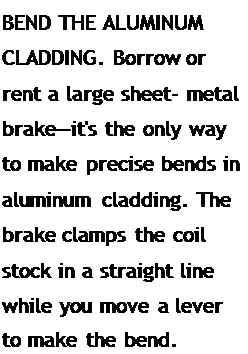
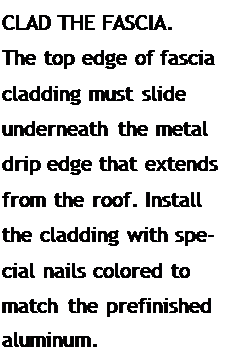
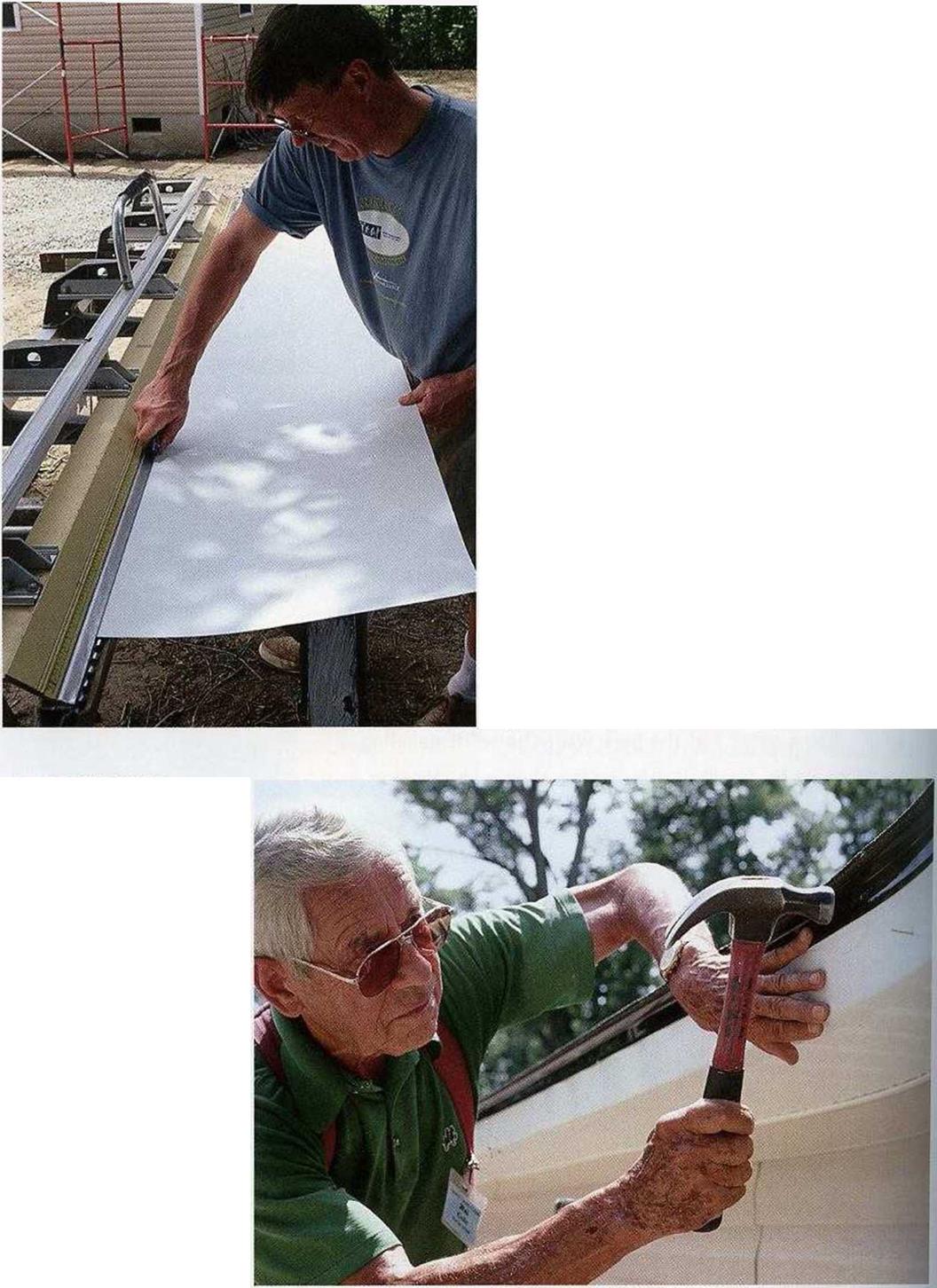
STEP 8 Cover Exterior Trim with Aluminum Cladding
Aluminum trim, often referred to as coil aluminum because it comes in a coil or roll, can be shaped and used to cover rough exterior trim, such as gutter boards, barge rafters, and beams. This sheet metal comes in various widths and colors. The small nails used to install the material are available in matching colors. Softer than steel, coil aluminum can be cut with tinsnips or a utility knife. The same long, flat worktable that was used during vinyl siding installation is just as valuable for sheet – metal work. To make the precise bends that give the finished cladding its clean-lined
We have to set up scaffolding to finish the siding and soffit work; by this time, the house is really looking great. . .
After a break to admire our progress (and cleanup the spare pieces of vinyl siding)f we start to cut aim bend the aluminum cladding that will cover the fasti boards and the barge rafters. . .

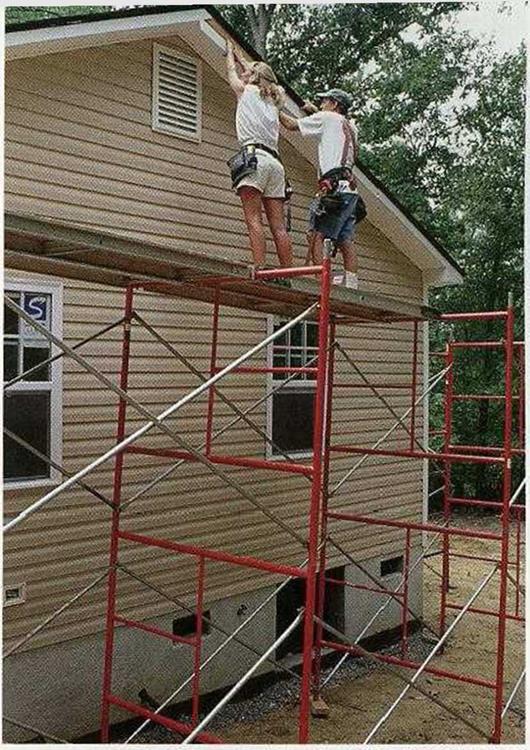
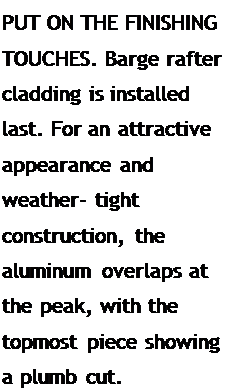
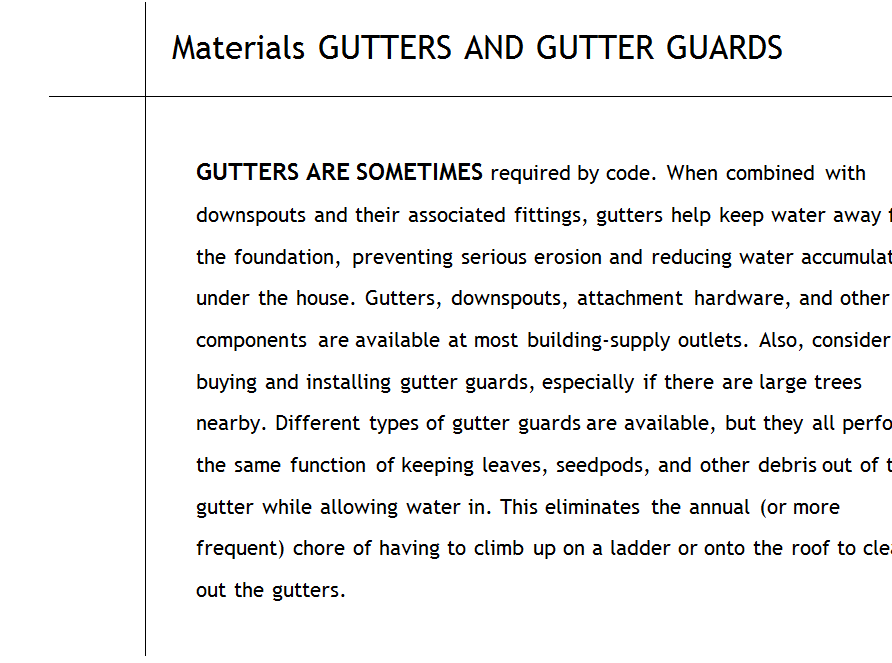
appearance, you 11 need a hand brake as well as a large sheet-metal brake, which you can borrow or rent (see the top photo on the facing page).
To wrap a 2×4 gutter board, cut a 6-in.- wide strip of aluminum and bend it at 4 in. into a 90-degree angle. The 4-in. leg slips under the roofs drip cap and covers the front of the gutter board. Attach it with matching 1-in.-long nails every 24 in. along an imaginary centerline (see the center photo on the facing page). The 2-in. leg fits over the vinyl soffit, covering the nails used to secure the soffit to the bottom of the gutter board. Be careful not to drive nails so hard that you leave a hammer imprint in the metal.
The cladding that covers the boxed return is a bit more complex, but the bends can be made with a hand brake. At the ridge peak, run one piece of aluminum past the center – line, then cut the second piece plumb to give the trim a finished appearance.
Any time you use aluminum to cover gutter boards, posts, or beams, make absolutely sure that no water can get behind the aluminum. You can do this by overlapping adjacent sections of cladding by 3 in. to 4 in. and by ensuring that a higher section of cladding (on a barge rafter, for example) always overlaps a lower section.
A big bending tool, called a brake, creases the aluminum perfectly straight… When it slides into place over the wood, it looks like it belongs there.
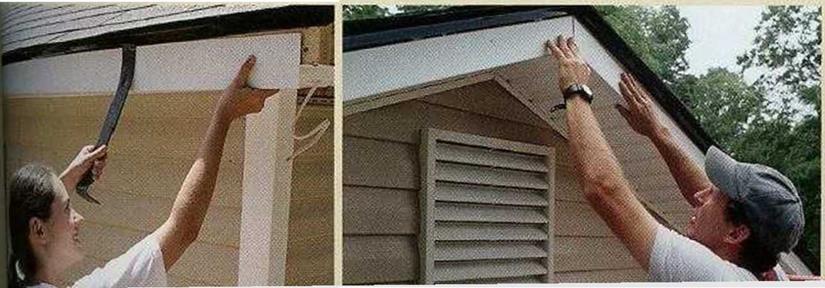






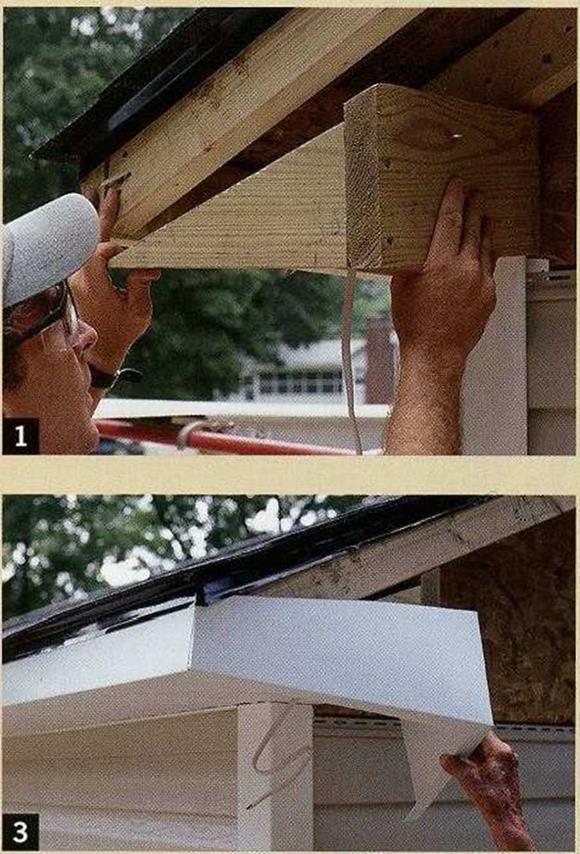
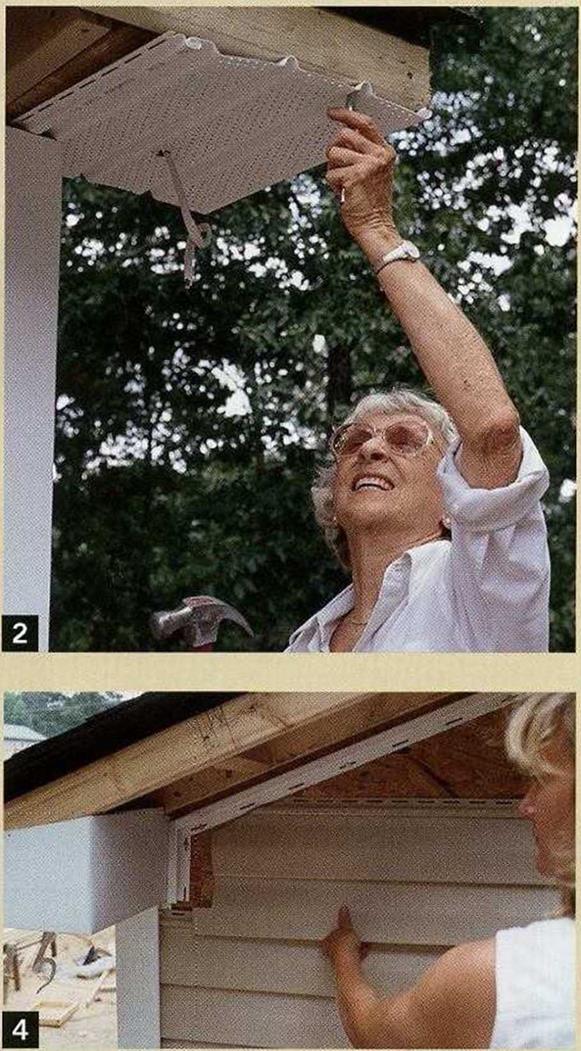
Leave a reply